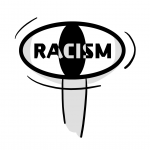WARNING: THIS ARTICLE CONTAINS SPOILERS FOR “BILL & TED FACE THE MUSIC.”
After a nearly three-decade-long hiatus, Chris Matheson and Ed Solomon’s infamous science fiction comedy series “Bill & Ted” returned this past month with its third and possibly final installment, “Bill & Ted Face the Music.”
The series follows Bill Preston and Ted Logan, a pair of time-travelling, slacker metalheads destined to unite the world in song and bring forth an unprecedented era of world peace and advancement.
However, it seems to have reached its conclusion in this film, wherein our protagonists distribute instruments throughout all time and space, instructing everyone to play along in a sort of omniversal concert.
This act of harmony allows humanity to put aside their differences, ushering in the aforementioned age of peace. As Bill’s daughter Wilhelmina says at the end of the film, it’s not the song that is important — it’s the fact that everyone came together to play it.
While the film is obviously meant to be a comedy, its premise of wanting to unite the world seems oddly prescient, especially for a series whose first film debuted in 1989.
Even as improvements in communication and transportation bring us, in some ways, closer together, the world seems in many other ways to be more divided than ever before.
This is perhaps most readily apparent in the context of the United States, where the gulf between our two parties has done nothing but widen in recent years.
More and more voters react negatively to their fellow citizens across the aisle — so much so that outgroup negativity has come to define modern politics more than ingroup loyalty.
It’s no surprise that political opinions are farther apart than ever before. Americans are drifting further to either side, leaving little room for moderate beliefs or common ground. Even where we get our news differs — the vast majority of Republicans distrust the mainstream news sources upon which much of the political left seems to rely.
All of this begs the question: how can we come together when we can’t seem to agree on anything?
It’s definitely a bigger task than any one song, even an infinite song played by everyone across all time and space. But there is evidence that, despite all the partisan division, we may be closer together than it might seem — especially on certain issues.
Research conducted by the Institute for Advanced Studies in Culture only a few months before the 2016 election found that the majority of Americans, regardless of party, had a deep distrust in government.
64 percent had “little to no confidence” in Washington’s ability to solve problems and a whopping 88 percent considered political events to be closer to theater than a serious matter — both the right and left agree that corporate influence on politics is harmful to the nation, as do many Americans in between.
While it may not be the most optimistic of pictures, the data is clear: most Americans are dissatisfied with the state of the government today, and they’re dissatisfied for roughly the same reasons.
With all this in mind, I’d like to propose a new narrative surrounding our divisions today.
Political polarization is the result of hardship and, more specifically, of a lack of trust in the leaders’ ability to solve that hardship. It’s certainly not a novel concept — Stanford professor Neil Malhotra has written extensively on how corporate interests have created a demand for populism — but it is a useful one.
While it can be easy in this day and age to write off the actions of those we disagree with as stemming from immorality, ignorance or stupidity, it’s also important to remember that we’re all, in a sense, on the same sinking ship.
Rather than getting mad at those who lose their cool, it’s more useful and kind to calm them down, hand them a bucket and help them start shovelling out the water — the rest can come later.




